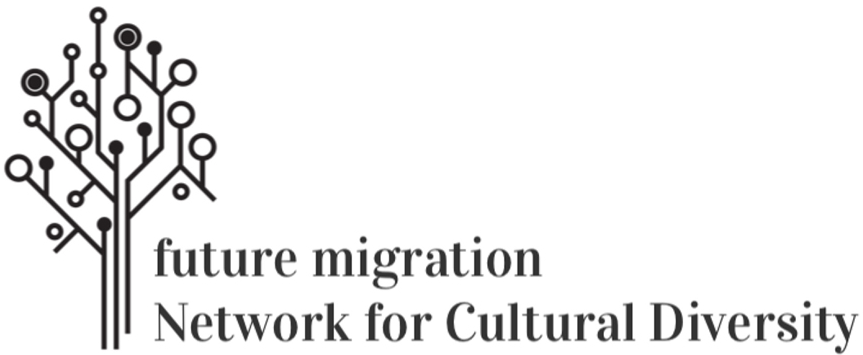There are several hundred different definitions of culture[1]. A concept of culture that tends to result in racialization was for example introduced by Geert Hofstede and Samuel P. Huntington. Annita Kalpaka and Paul Mecheril have, in turned, rethought and resituated the term critically. The way various disciplines deal with culture, such as the theories and the (non) consideration of poststructuralist and especially postcolonial perspectives, vary widely. If culture (such as in the German word “Leitkultur” or in current integration debates) is widely understood to be a static, homogenous quantity, affirming the myth that the members of a culture are determined in their thinking, acting and feeling – as if they were bereft of agency and hence marionettes in the threads of their culture. Thus, culture is essentialized and constructed as “given by nature”. Contoured like this, it serves as conceptual pillar for racism and its constructions of ‘race’: Members of different cultural collectives are narrated as belonging to this culturally different collective, while members of the own group are somewhat antothetically accredited individuality (see Leiprecht, 2004). The underlying mechanism works analogously to that of racism: groups are defined on the basis of criteria, which reinforce the ideological construction. Based on this, a culture is attributed to them, and the cultures are subsequently hierarchized and valued (see Rommelsbacher, 2009). This is accompanied by the reproduction of a we-non-we-dichotomy1, which is the central discriminatory practice of the racist system. A distinction scheme is frequently relied on that is, in turn, rooted in the myth of cultural differences. It is significant in this context that this difference is not self-evidently existential, but a (re-) produced constructed difference, which is closely related to social power: Only the powerful social group succeeds in implementing the construct of the others and thus, also its own versus “their culture”. Edward Said calls it "othering". What is emphasized here is that the process that makes people become the others is needed to construct a we as the supposedly superior self. While the we is constructed unambivalently (reassuring), the construction of the others represents the binary opposition: we are rational, the others are emotional, we are civilized, the others are wild, etc. (see Said, 1991). This construction is based on the binarism, which poses culture as being manichaeistically superior to nature. Once set up by humanism, enlightenment, and modernity, this very binarism serves as the main elixir of all discrimination narratives: for example man versus woman, heterosexual versus homosexual, but also the West versus the rest, whiteness versus People of Color. Constructed in this way, the emergence of a Western identity is the result of its excluding the rest (see Hall, 1994). The deconstruction of static cultural understanding is often followed by a hybrid culture model, which does not understand culture as a static, unchangeable, unified structure, but rather emphasizes the (potential) incompleteness and processability of culture. However, even in contexts where a hybrid understanding of culture is prevalent, two aspects are rarely observed: on the one hand, the role that power plays in this context, and on the other hand, the fact that culture is again (also) a central criterion of distinction. A reflection on why it is (still) culture at the center is rare, although it could lead to the recognition that a large part of the negotiations that focus on culture are about exclusion and inclusion. As a result, the discursive offer (e.g. integration debates), as well as the scientific orientation (transcultural, diversity, etc.), must be regarded as a central component of this problem. It is, therefore, necessary to provide analytical tools for resituating the categorization process, within the framework of knowledge production in and through the “ivory tower of science”, too. Consequently, according to Michel Foucault, criticism is all about questioning the truth about effects of power just as much as subverting the power that controls discourses of truth (see Foucault, 1992). This must be followed by a (continuous) reflection about the (non) possibility of holding no position in science and the declamation of the nonpolitical as an indication of scientific knowledge, as the nonpolitical is in fact the political, because it is not marked (s. among others Dirim et al., 2016).
Author: Nina Simon
I would like to thank Aysel Sultan for her feedback and her corrections.
Literature
Dirim, İnci et al. (2016): Nothing but ideology? A replica of the devaluation of racism-critical work. In: Mecheril, P. and Castro-Varela do Mar, M. (Ed.): The Demonization of the Others. Racism Criticism of the Present, Bielefeld, 85-96.
Foucault, Michel (1992): What is criticism? Berlin.
Hall, Stuart (1992): The West and the rest: dicourse and power, in: Hall, Stuart / Gieben, Bram: Formations of Modernity. An Introduction. Book 1, Cambridge, 275-331.
Leiprecht, Rudolf: Culture -What is that actually ?. Carl von Ossietzky University of Oldenburg. Working Papers IBHM No. 7, Oldenburg 2004, ISSN 1438-7794, available online at: https: //www.uni- oldenburg.de/fileadmin/user_upload/paedagogik/personen/rudolf.leiprecht/Kulturtextveroeffentl..pdf (last access on 08.02.2017)
Rommelsbacher, Birgit (2009): What is actually racism: http: //www.birgit- rommelspacher.de/pdfs/Was_ist_Rassismus.pdf (last access: 08.02.2017).
Said, Edward (1991): Orientalism: Western Concepts of the Orient (New edition). London.
[1] The cursive spelling of certain terms and concepts in this text has two functions: firstly, to highlight the constructive character, and secondly, to visualize the problems frequently associated with the use of these concepts.

